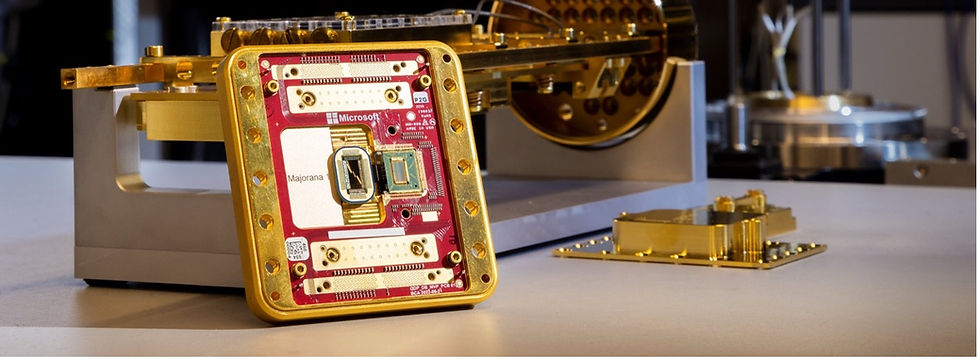The Quantum Leap in Forensic Investigations
- Alisa Wang

- Aug 6
- 2 min read

Instead of murder cases, the biggest news headlines that we see in the future may well be reports of AI-powered cyber-attacks, data leaks, and cloud hacking using quantum computers. In fact, the world of quantum mechanics and digital forensics may not be as far-fetched as we think.
The first ideas of a quantum computer, a computer with the ability to harness the laws of quantum mechanics, was popularised by physicist Richard Feynman in the 1980s. Compared to classical computers, quantum computers should be able to solve complex problems much faster and with higher accuracy. Their astounding capability is largely attributed to the fact that quantum computers use quantum bits (qubits) instead of binary bits to perform calculations. The qubits exhibit two key features that make it much more advanced than classical computers: the superposition of states, which allows them to exist in a combination of 0 and 1 simultaneously, and quantum entanglement, which refers to the unbreakable connection between two more qubits regardless of distance.
Now, what does this mean for the future of forensics? In the field of password guessing, quantum computers can process multiple possibilities at the same time, making it much faster. For example, Grover’s algorithm in quantum mechanics allows for the search of an unsorted database in time instead of which is the speed of current computers. This means that the function of time taken to finish the task grows much more slowly (in a function instead of ) as the number of elements increases. The increased efficiency could significantly benefit law enforcement agencies when they require password-protected material. Criminals would also be pressured to find alternative methods to increase operational security. On the other hand, it also lets hackers access classified data more easily.
Another example is quantum imaging, which is a new field of quantum optics that uses quantum entanglement to create high resolution images. Quantum ghost imaging is a technique that uses invisible infrared photons and visible light photons to illuminate objects. The visible light photons are then recorded by a camera, forming an image. Quantum cameras can capture detailed images of crime scenes to analyse microscopic evidence like fibres and fingerprints with much higher accuracy.
A challenge emerges in quantum forensics. Live forensics refers to the process of collecting and analysing digital evidence from a running system. However, this would not be possible with quantum computers as doing any measurement on a superposed state would cause it to collapse. Post-mortem, conversely, is a much more likely prospect which involves the analysis of the output after the incident.
While these methods are all simply speculations of how quantum physics may be used in cryptography, they might come into fruition very soon. Just recently in February 2025, Microsoft revealed Majorana 1, the world’s first quantum chip. The palm-sized chip fits a million qubits, giving it unprecedented efficiency and accuracy. Who knows, maybe this will turn into the new revolution of criminology.
Bibliography:






Comments